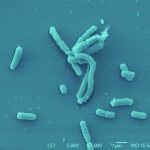Lien vers Pubmed [PMID] – 31265742
Lien DOI – 10.1002/path.5323
J Pathol 2019 11; 249(3): 368-380
Treatment with cold atmospheric plasma (CAP) has been reported to promote wound healing in animals. However, how this process is mediated remains unclear. In this study we examined the mechanisms which underlie the improved wound healing effects of CAP and the roles of associated reactive oxygen and nitrogen species (RONS), which are generated by plasma. By using in vitro models which mimicked various steps of angiogenesis, we demonstrated that CAP triggered the production of nitric oxide (NO), and enhanced cell migration and the assembly of endothelial cells into vessel-like structures. These are both hallmarks of the proliferative phase of wound healing. Using a mouse model of a third-degree burn wound, we went on to show that CAP treatment was associated with enhanced angiogenesis, characterised by accelerated in vivo wound healing and increased cellular proliferation. Here, CAP significantly increased the in vivo production of endothelial NO synthase (eNOS), an enzyme that catalyses NO synthesis in endothelial cells, and significantly increased the expression of pro-angiogenic PDGFRβ and CD31 markers in mouse wounds. Mechanistically, we showed that CAP induced eNOS phosphorylation and activation, thereby increasing the levels of endogenous NO in endothelial cells. Increased NO generation facilitated by CAP further stimulated important pro-angiogenic VEGFA/VEGFR2 signalling in vitro. This proof-of-concept study may guide future efforts aimed at addressing the use of physical plasma and its therapeutic applications in a variety of pathological scenarios. © 2019 Pathological Society of Great Britain and Ireland. Published by John Wiley & Sons, Ltd.


